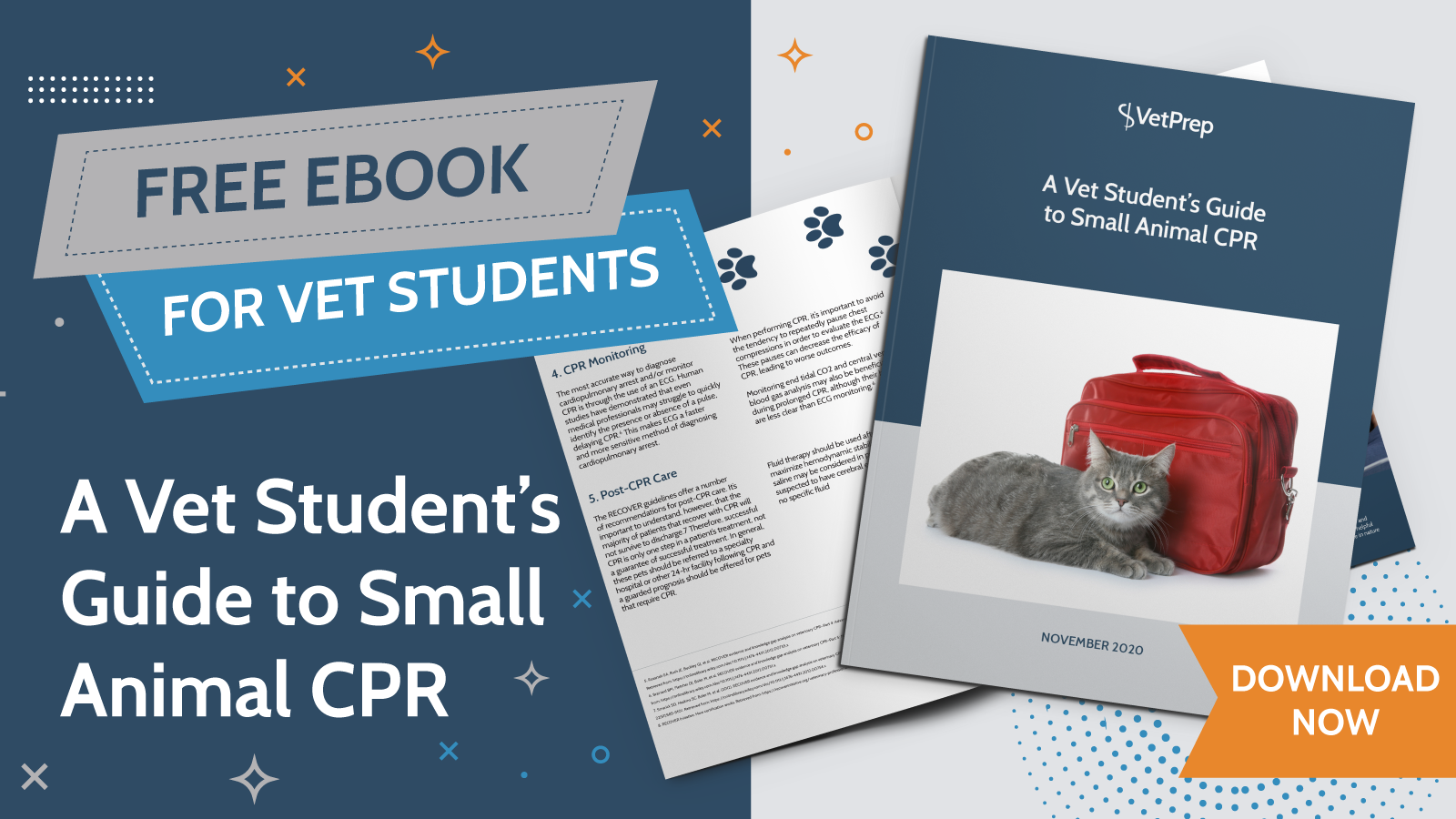
Pop Quiz: It’s the first day of your internship and you’re presented with a critically ill dog requiring hospitalization and a thorough workup. You haven’t yet figured out what’s wrong with the dog, but you want the techs to start it on maintenance fluids right away as you gather your thoughts and present a plan for the owner.
As your techs begin to create a treatment sheet, they record your requested fluid rate and ask if you would like the pet to receive any sort of monitoring.
What do you answer?
If you said “Yes, let’s start with hands-on, repeated physical examinations” you are correct!!
Despite all of the high-tech tools available in a modern ICU, repeated physical exams are the most valuable tool available for monitoring a critically ill pet. Depending on your patient’s condition, these exams should be repeated every one to twelve hours for as long as your patient remains in the ICU.1 And it isn’t enough just to perform these exams; the results of each of these exams should be carefully documented in the patient’s record, in order to allow monitoring of trends.

In addition to the all-important physical exams, however, there are a number of other monitoring tests routinely performed in the ICU. As a new grad, it’s important to understand these tests so that you can interpret results accurately.

Arterial Blood Pressure
Critically ill patients are at risk of hypotension, which makes blood pressure monitoring a common occurrence in the ICU. Blood pressure monitoring may be direct (using an arterial catheter) or indirect (using a Doppler or an oscillometric cuff placed on a limb or the tail).
Basic Lab Test Monitoring
The most common lab tests measured in ICU patients include PCV, total protein, BUN, glucose, and urinalysis. The frequency with which these tests are performed will depend upon the patient.
Blood Gas and Electrolyte Analysis
Blood gas and electrolyte monitoring is performed in many critically ill patients, depending upon the underlying cause of illness. Blood gas analysis can be used to diagnose abnormalities in acid-base balance, ventilation, or oxygenation.
Central Venous Pressure
Central venous pressure (CVP) monitoring can be beneficial in any pet receiving fluid therapy, but is especially valuable in the treatment of shock. Measuring the CVP provides an indication of the blood pressure in the intrathoracic cranial and caudal vena cava, which is approximately equivalent to the right atrial pressure.
There are two methods of CVP monitoring: a water manometer or an electronic monitor. Many ECG monitors also have the ability to perform CVP monitoring.
Coagulation Tests
Depending on the patient’s underlying condition, serial clotting tests may be recommended. Common clotting tests include thromboelastography, aPTT, PT, and platelet counts. The frequency with which these tests are performed will depend upon the pet’s suspected underlying condition.
Continuous ECG Monitoring
Electrocardiography is primarily used as a means of monitoring the heart rate of patients in the ICU. An increase in a patient’s heart rate may indicate pain or decompensation.
In addition to heart rate monitoring, it’s important to also pay careful attention to heart rhythm, watching for ECG abnormalities. Large T waves may indicate hypoxia or hyperkalemia, while ST depression may indicate hypovolemia or hypotension (leading to ischemia of the left ventricular free wall).
Fluid Ins and Outs
Many critically ill patients are receiving intravenous fluids and/or have a disrupted fluid balance. For this reason, it’s important to monitor fluid “ins and outs.” Ins include water intake, IV fluids, and fluid contained in the diet (enteral or parenteral nutrition). Outs include urine, feces, vomit, fluid seepage from wounds, and fluid movement into body cavities (also known as third-spacing). Monitoring body weight in addition to ins and outs can serve as an additional aid in monitoring a pet’s fluid balance.
Pulse Oximetry
Monitoring oxygenation is most important in pets on a ventilator or oxygen therapy, but it may also be used in other circumstances. Keeping a pulse oximeter in place on an alert patient can present challenges, however, which limits the use of pulse oximeters in many pets.
Conclusion
While you certainly aren’t expected to know everything about monitoring critically ill pets on your first day out of veterinary school, having a basic understanding of these common ICU monitoring tests will help prepare you for your first critically ill patient. Remember that your physical exam is always the most important monitoring tool that you have available, but the rational use of these adjunct monitors can also help you by providing valuable information about your patient.
References



